The ship was sold again in 1971 and was renamed again as the Kimon until 1975 when the “M” was added to her name upon being sold to the Ianissos Shipping Company, Panama.
The ship, under the command of Captain Juan Cavilieri, departed Iskanderun, Turkey for Bombay, India in December 1978 laden with a cargo of 4,500 tons of bagged lentils.
The ship’s route landed her in Port Said 2 days later, reaching Suez 2 days afterwards after safely transit-ting the Suez Canal.
Captain Cavilieri, who had spent most of the previous 4 days on the bridge ensuring that the ship made the passage from Iskanderun to Suez and through the Straits of Gubal safely, checked the ship’s course and speed before turning the helm over to one of his officers and retired to his cabin for some much needed rest.
Lloyd’s Casualty List – dated 13 December 1978, stated the following:
“KIMON M. (Panamanian). Port Said Dec 12 – MV Kimon M, Iskenderun for Bombay with about 4,500 tons of Lentils, reported stranded near Safaga, exact position still to be ascertained. All crew reportedly abandoned vessel and rescued by MV Interasja, arriving Suez Dec 13-14. (Note Kimon M had passed Suez Dec. 10.)”
With the ship moving at full speed when she struck the reef, she remained hard aground for several days afterwards allowing partial salvage of the ship’s cargo.
Lloyd’s Casualty List – of 14 December 1978 provided an update:
“KIMON M. (Panamanian). London, Dec 12 – Kimon M struck wreck in position lat. 27 35N, long. 33 55 E. Strait of Gubal. Vessel requires tug assistance on Lloyd’s open form (See issue of Dec 13.)”
This report indicates the Kimon M struck another wreck! Although at that time there were no other known shipwrecks in the area. It could be that the ship struck a wreck that had earlier run aground and was later refloated.
As the ship remained on top of the reef, the winds and currents eventually took their toll, pushing the ship over onto its starboard side and reducing the already damaged bow to nothing more than a pile of scrap metal. Eventually the rest of the ship, from the superstructure aft, slid off the reef and settled on her starboard side in 20-32 meters of water at position 27.34.48 N/ 33.56.00 E at the base of Sha’ab Abu Nuhas Reef.
Sometime afterwards, the Kimon M was again partially salvaged. A local salvage company cut a hole in the port side of the ship and removed her engines and other machinery.
Diving Information
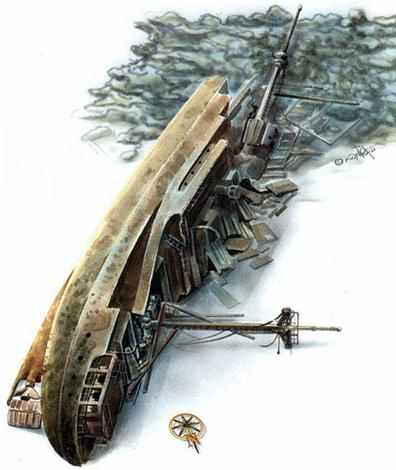
From the base of the superstructure to the stern, the vessel is nearly complete. Access into the ship is through the hole in the port side which was cut by the salvage team. This provides access directly into the engineering compartment. With much of the equipment having been removed this provides an easy swim-through with views forward to where the No. 2 hold was, and is also another access/exit point. The aft area of the engine room still contains piping, gauges, and numerous valves. Exiting from the engine room and following the hull of the ship aft to the stern at 30-32 meters where the propeller and rudder are found on the bottom. Coming around the stern and heading forward along the main deck, which is now vertical, deck equipment can still be seen, along with a swim through the 2 aft cargo holds, now empty. Continuing forward to the rear of the superstructure there is access to the bridge and accommodation areas.
Miramar Single Ship Reports for 5074434
http://touregypt.net/vdc/Theolden.htm
http://www.redsea-divers.com/main/index_en.php?id=wrack_abunuhas



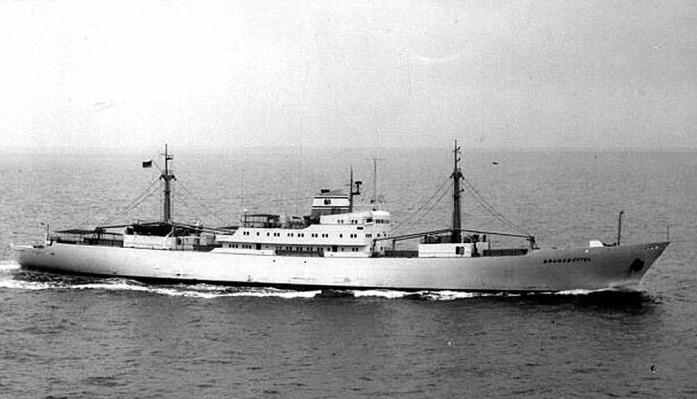
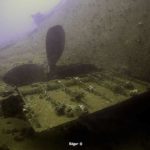
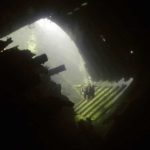
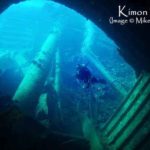
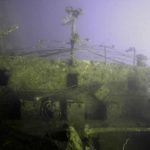
1 Comment
the photo does not show the BRUNSBÜTTEL built in 1952. photo of the above mentioned ship see here:
https://www.shipspotting.com/photos/2769677?navList=gallery&imo=5074434&page=1&viewType=normal&sortBy=newest